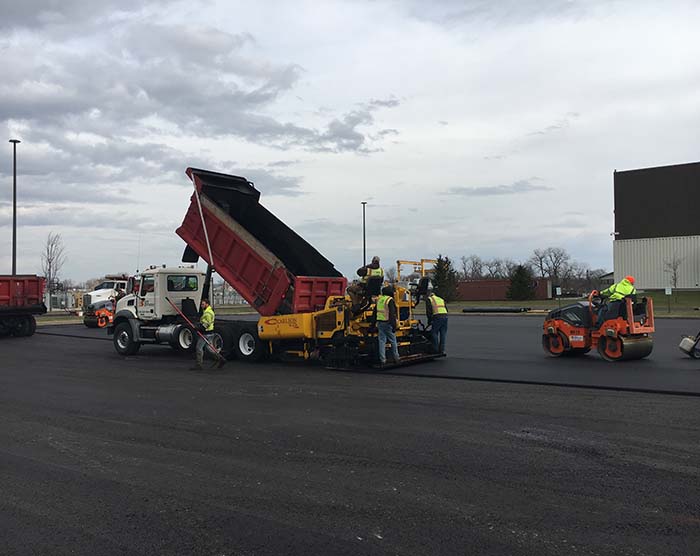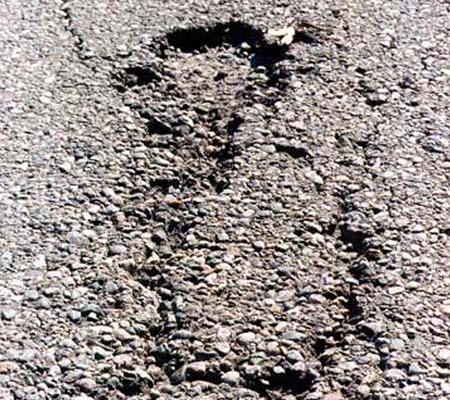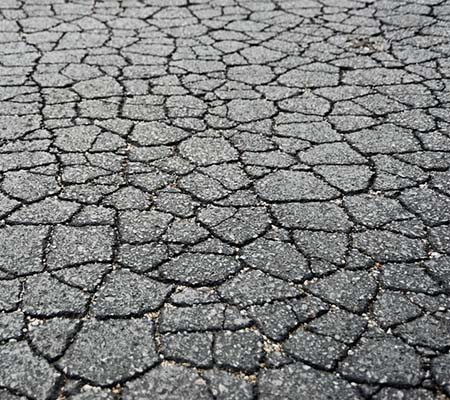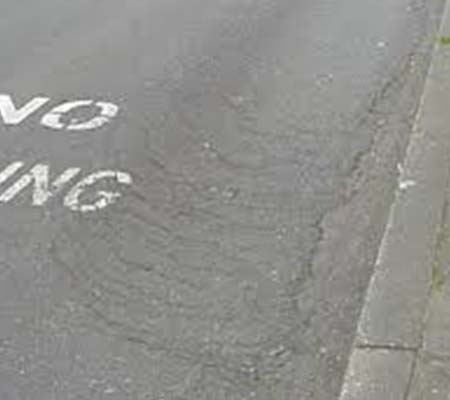Pavement Evaluation
The key to successful maintenance is careful planning of the work to be done.
The first step in planning is an evaluation of all parking areas and access roads in the system with respect to surface condition, structural strength, and drainage. The parking lot should be thoroughly inspected. Time and money spent for such repairs are well invested, since the same repairs will not have to be repeated in the future.

What To Look For

Raveling
This is the progressive separation of aggregate particles in a pavement from the surface downward. Usually, the fine aggregate comes off first and leaves little “pock marks” in the pavement surface. As the process continues, larger and larger particles are broken free, and the pavement soon has the rough and jagged appearance typical of surface erosion. Raveling can result from lack of compaction during construction, construction during wet or cold weather, dirty or disintegrating aggregate, poor mix design, or extrinsic damage to the pavement.

Alligator Cracks
These are interconnected cracks forming a series of small blocks resembling an alligator’s skin or chicken wire. In most cases, alligator cracking is caused by excessive deflection of the surface over unstable subgrade or lower courses of the pavement. The unstable support usually is the result of saturated granular bases or subgrade. The affected areas in most cases are not large; sometimes, however, they will cover entire sections of a pavement, and when this happens, it usually is due to repeated loading exceeding the load-carrying capacity of the pavement.

Potholes
These are bowl-shaped holes of various sizes in the pavement, resulting from localized disintegration of the pavement under traffic. Contributory factors can be improper asphalt mix design, insufficient pavement thickness, or poor drainage. Also, pot holes may simply be the result of neglecting other types of pavement distress.

Rutting
Rutting is localized low areas of limited size which may or may not be accompanied by cracking. They may be caused by traffic heavier than that for which the pavement was designed, by settlement of the lower pavement layers, or by poor construction methods. A depressed cracked area frequently denotes a plastic failure in the base or subgrade. A cracked area without permanent deformation often indicates an elastic movement in the pavement structure.
